The day after Cyber Monday, all ecommerce merchants take a collective sigh as they feel the weight of Cyber-Weekend slip off their shoulders. Now you can finally relax, right? Not so fast. The busiest weekend of the year may be over, but the holiday season is just beginning. Do your post-Black Friday planning now and set up a strategy to nurture new customers.
Check out these 5 tips to start planning your post-Black Friday strategy.
1. Use Data to Get to Know Your Shoppers
Black Friday / Cyber Monday may be the busiest shopping days of the year, but a high volume of sales will continue throughout December and into the New Year. Use Cyber Weekend data to guide your Merchandising and Personalization strategy.
-
Search Insights
Use Search Insights reports to get a snapshot of your site performance and determine the following:
- What shoppers are searching for this holiday season with Popular Searches and specific terms
- Products that are the highest-grossing
- What converts (and what doesn’t)
- Items you may need to order more of or might want to consider stocking
- Synonyms that need to be set up
Take the knowledge gained from Search Insights to understand your audience better and adjust the content on your site as needed.
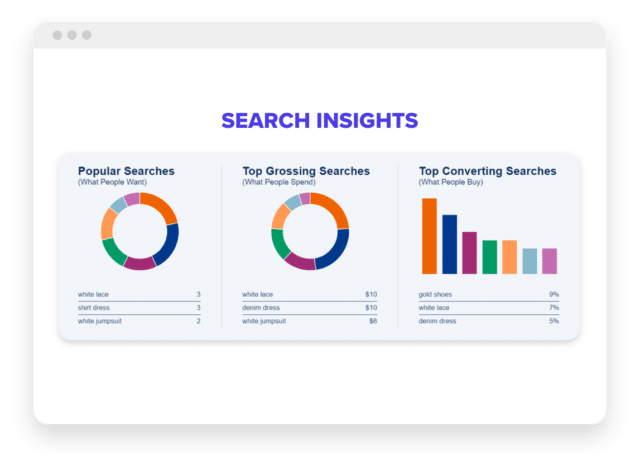
Search Insights Report Provided by Searchspring
-
Product Insights
Product Insights give you a deep dive into specific product performance so you can merchandise accordingly.
- View your top-viewed products
- Breakdown top grossing items
- See top-transactions
- Get a breakdown of each product view-by-view, click-by-click
Analyzing Product Insights helps you set up and tweak your Merchandising strategy. Maybe a product that you weren’t expecting to be quite as popular flew off the shelves. Consider highlighting this product on your homepage or use boost rules to feature it on search and category pages. Provide this data to stakeholders to streamline messaging across teams and celebrate wins.
“Following a launch, we can see how many searches there are for that particular product. I like having that really clear data that we can give back to the design team.”
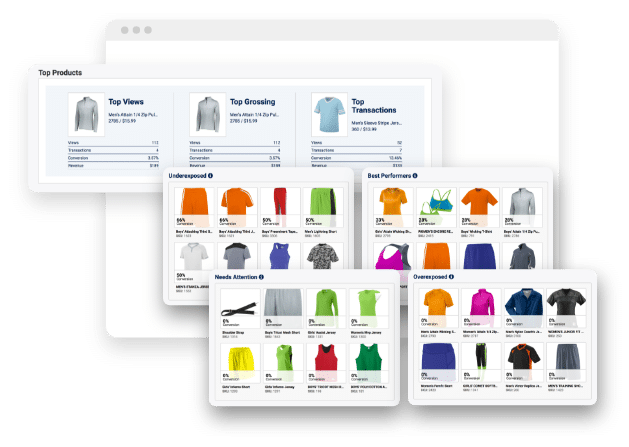
Product Insights Report Provided by Searchspring
-
Google Analytics
One of the most important tools in your ecommerce tech stack is Google Analytics (GA). Examine your GA reports to identify the following from Black Friday through Cyber Monday:
- Keywords
- What is trending
- Competitors keywords
- Number of website visitors (new, unique)
- Bounce Rates
- Medium / Source
- How shoppers moved through your site
Use data from GA to provide a better user experience and optimize your site. If it took several clicks for shoppers to get to what they were looking for, figure out how to simplify their journey. Create campaigns / collection pages and Product Recommendations based on what is trending.
How to use keywords and competitors keywords:
- In product descriptions
- To set up synonyms
- Optimize zero-results pages with product descriptions
- Find out what content works and doesn’t work
Keyword research can be performed with tools such as SEMRush, Moz, or Ahrefs. You can also get amazing Google Analytics snapshots through ecommerce reporting tools like Searchspring, which integrates with your GA account.
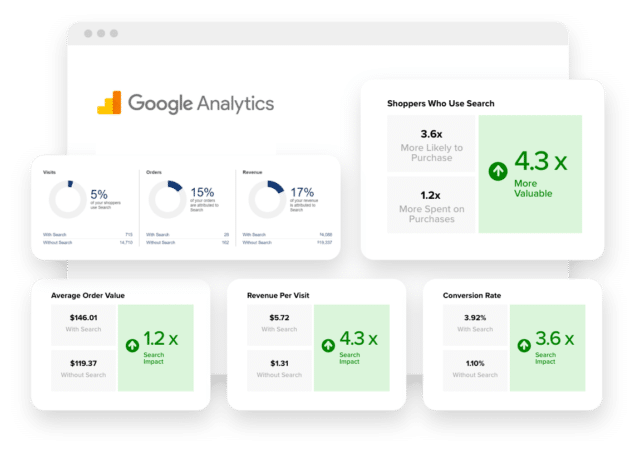
Google Analytics Insights From Searchspring
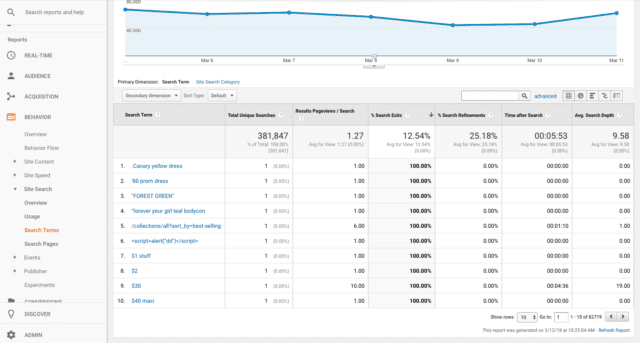
Google Analytics Account
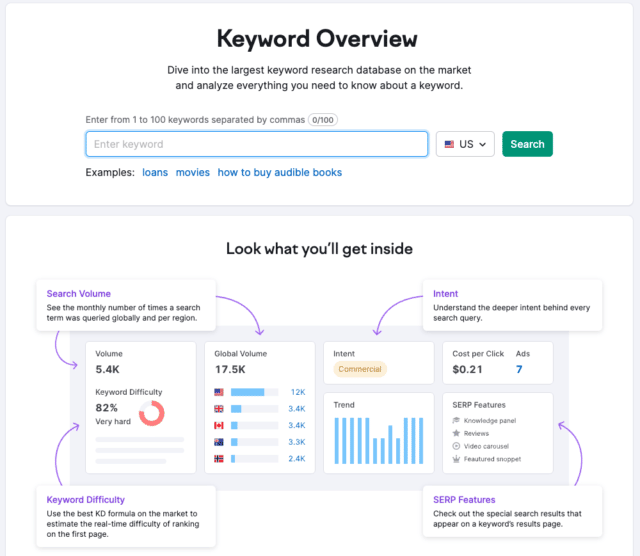
Google Analytics Keyword Tool SEMRush
-
Zero Results Report
Zero results pages happen because you don’t carry the product searched for and/or your site search isn’t optimized to pull in relevant products. Native on-site search doesn’t usually allow search configuration, but a good ecommerce search tool can help you remedy this situation.
Identify searches that resulted in a zero-results pages so you can provide a better shopper experience.
Below are some ways you can avoid or get creative with the dreaded zero-results page.
- Take this opportunity to promote best sellers and trending products
- Determine customer needs with a product-finder quiz
- Offer “You Might Also Like” suggestions
- Find out if they are searching for products or content
- Give contact information so you can help them and add a personal touch
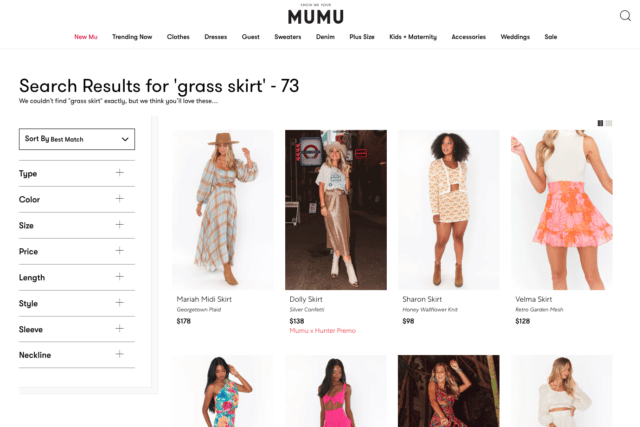
Show me Your Mumu Zero Results Page
2. Nurture Relationships with Personalized, Logical Recommendations
You probably got a lot of new customers to your site during Cyber Weekend. Many of these shoppers were likely shopping for someone else. The good news is, this doesn’t have to be a one-and-done buyer if you nurture the relationship properly.
Segment customers out and tailor messaging to them. If they purchased a woman’s sweater on Black Friday, hit them up throughout the holiday season through email and retargeting with accessories that compliment the sweater. It may seem logical to recommend more women’s sweaters, but chances are they only need the one for now. Reach out to them periodically throughout the year with similar items.

Make Logical Product Recommendations That Shoppers Will Respond To
3. Holiday Campaigns and Collections
If you created a collection or campaign for Black Friday / Cyber Monday, GREAT! Keep it up.
Here’s some tips make sure these pages keep converting:
- Switch up your collections and campaigns so loyal/frequent customers see new items
- Create a gift guide for each category
- Boost best sellers and sale items
- Provide relevant content – for example:
- Put Together the Perfect Holiday Outfit
- Your Guide for the Ultimate Outdoor Christmas Decoration Display
- Dash Away Dry Skin
- The Host With the Most: Holiday Party Must-Haves
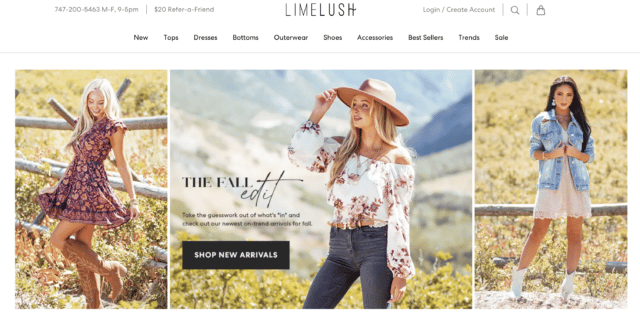
LimeLush Fall Edit Collection
4. Continue to Audit and Optimize Your Site
It’s smart to perform a ecommerce site audits throughout the year, but it’s especially important to audit your site on a regular basis throughout this busy season. With increased traffic, frequent content updates, and quickly changing product availability, your site is especially vulnerable during this time.
Regular site audits will identify areas that need immediate attention on your site so you can make necessary improvements. Some other benefits include:
- Provide a better user experience
- Streamline the path to purchase
- Increase conversion rates
- Produce happier customers
What to review in your audit:
- Site Search – Examine accuracy, relevancy, and zero results
- Merchandising – Ensure the right products are being displayed. Add in boost rules, banners, and badges where needed.
- Personalized Recommendations – Review recommended products, cross-selling, and upselling
- SEO – Check rankings, identify keyword gaps, review technical SEO
- Site Speed – Run tests to check load time
- Broken Links – Identify broken links through GA or an analytics tool and add redirects
- Mobile-Friendliness – Sometimes HTML breaks. Check mobile-friendliness regularly as this is where most people do their online shopping.
5. Follow Up
In addition to reaching out to shoppers with relevant product recommendations, there are several other reasons to to keep up communication with Black Friday / Cyber Monday shoppers.
Here are some additional email and retargeting ideas:
- Thank you email
- Tracking information
- Additional care instructions
- Product review requests
- Abandoned cart
- Relevant content
- Sales / Promotions announcements
- Information about loyalty program
You can take email beyond standard marketing messages or drip campaigns with Personalized Email Recommendations. Personalizing all the way to a shoppers inbox elevates their experience and improves likelihood they’ll shop your site again.
It’s the Most Wonderful Time of the Year: Set Your Ecommerce Site Up for a Successful Holiday Season
Black Friday / Cyber Monday is the jumping off point of consistent, busy traffic to your online store. Use data from Cyber Weekend to optimize your holiday ecommerce strategy and everyone wins. You get higher conversion rates and build your customer list, and shoppers get a great experience. While the ultimate goal is to turn holiday shoppers into regulars, sometimes that’s just not possible (for instance a man shopping a woman’s clothing boutique). But remember, that shopper is going to need a gift again eventually. Make sure it’s from you.
Join the conversation and get more insights on post-Black Friday planning during the Black Friday Follow-Up webinar.




